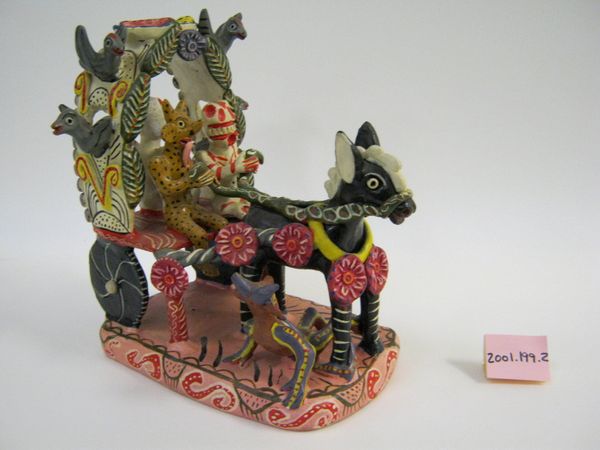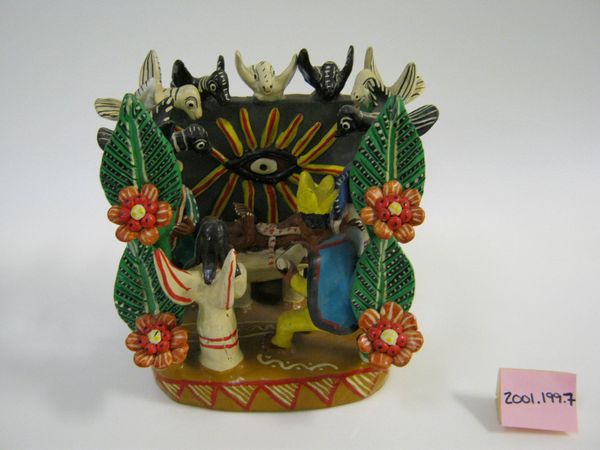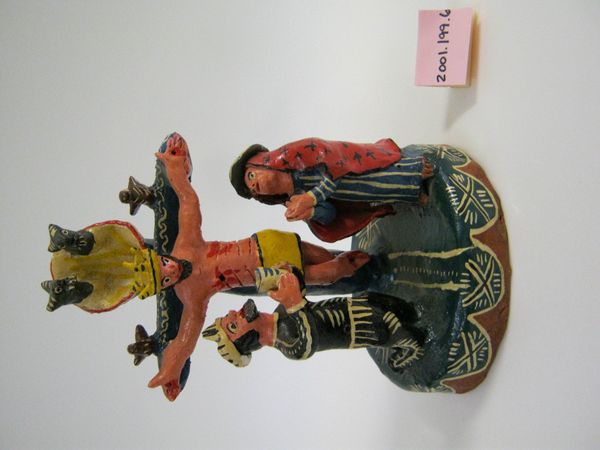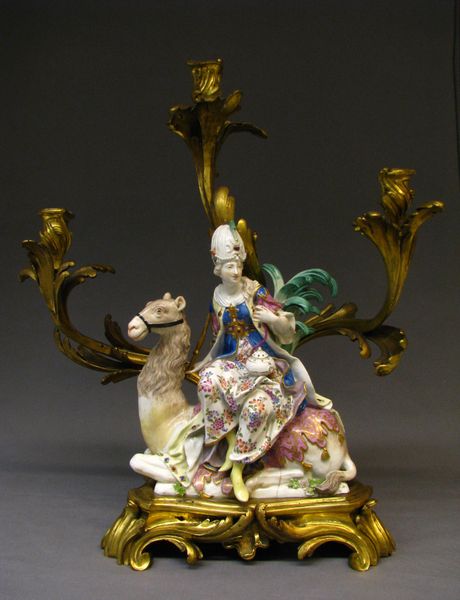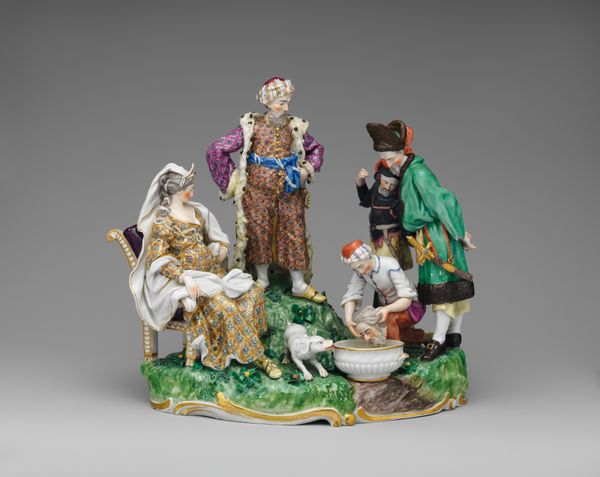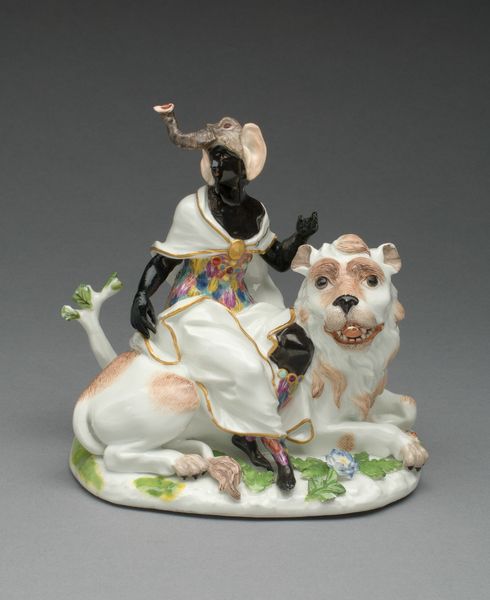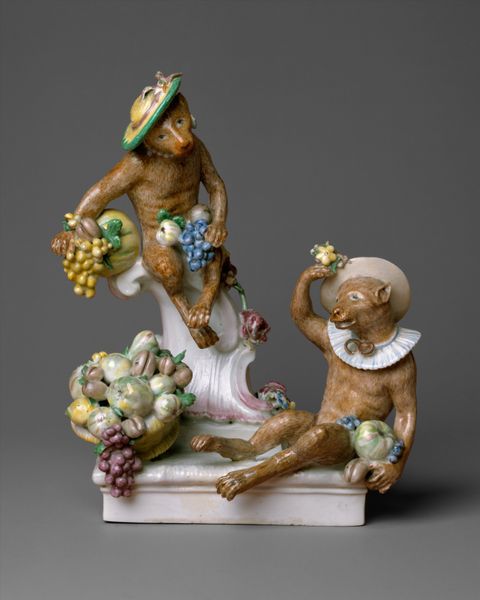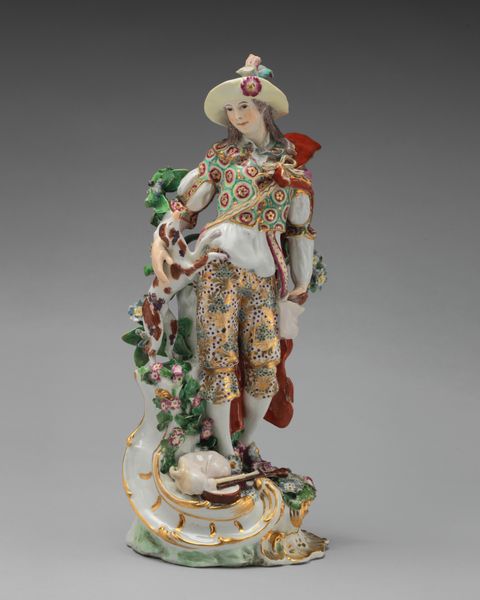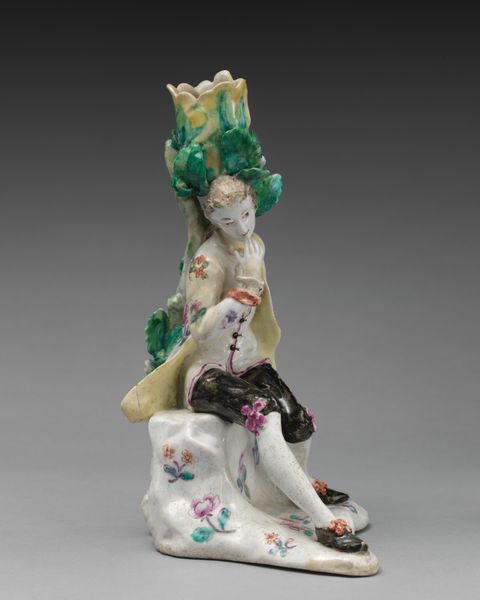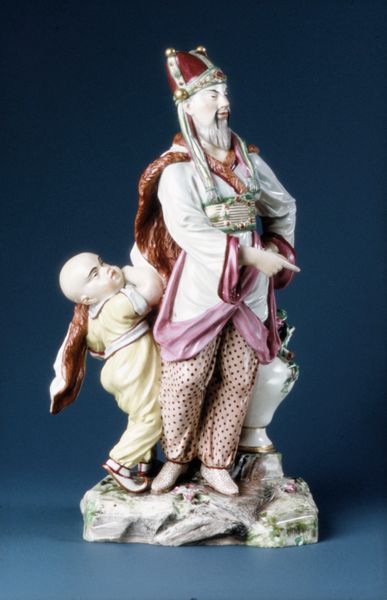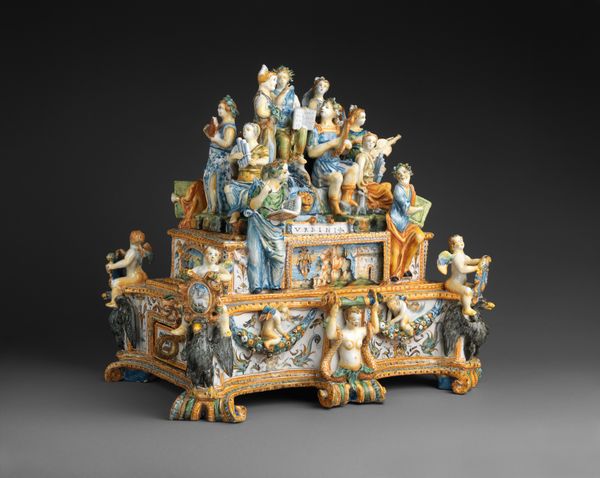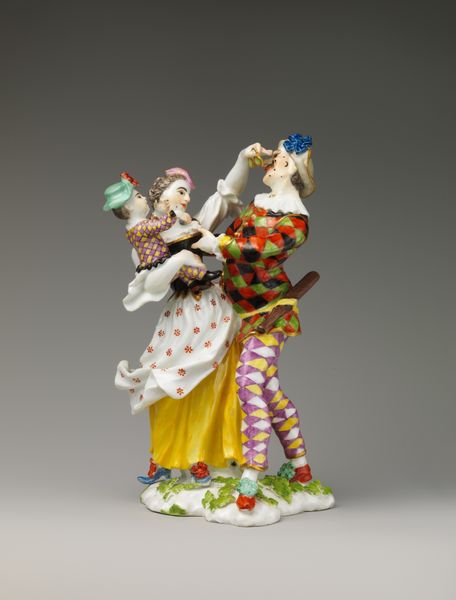
pigment, ceramic, sculpture
#
pigment
#
ceramic
#
indigenism
#
figuration
#
folk-art
#
sculpture
#
mexican-muralism
Dimensions: 15 x 7-3/4 x 16-1/2 in. (38.1 x 19.7 x 41.9 cm)
Copyright: Public Domain
Curator: This is an interesting ceramic sculpture called “Day of the Dead Group,” dating back to the mid-20th century. Editor: Macabre! In the best way possible, though. There’s a festive morbidity that immediately jumps out, a darkly celebratory energy. Curator: Indeed. It reflects the folk art traditions deeply intertwined with the Day of the Dead celebrations. Look at how the figures are presented—bright pigments highlight a scene with skeletal and monstrous figures, embodying cyclical themes of death and rebirth. Editor: What's fascinating is the implicit power dynamic presented. We see some monster figures riding what seems to be a cart being pulled by a donkey while being straddled by a helpless smaller figure. There are hints of social stratification rendered in the bright ceramics and vivid colors. What cultural narratives are really being memorialized? Curator: That’s insightful. The imagery draws upon pre-Hispanic and colonial symbolism, a syncretism typical of Mexican muralism and folk art traditions. Consider the monsters—do they serve as psychopomps guiding souls, or reminders of mortality's pervasive grip? Editor: Maybe both! The juxtaposition isn’t incidental. Ritualized grief doesn't operate outside larger contexts of violence and economic struggle. Curator: Agreed. How does it all intersect, the religious, the social, and the personal? This piece reminds us that symbols evolve, taking on layers of meaning over time. Editor: Absolutely. It pushes us to engage with cultural memory—what stories do we tell ourselves about the past, and how do these inform our present understanding of death, life, and the structures that bind us? It all feels quite visceral, actually, despite the miniature scale. Curator: Precisely. I find the piece to be a fascinating material representation of our enduring dialogue with mortality. Editor: For me, it's the intersectional themes of life, death, and power. The art serves as a powerful lens through which we can question, critique, and, perhaps, find a renewed appreciation for cultural inheritance.
Comments
No comments
Be the first to comment and join the conversation on the ultimate creative platform.
